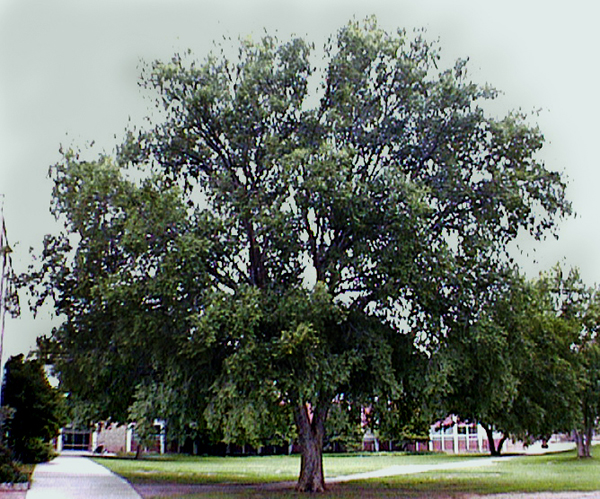
Sulfur dioxide, nitrogen oxides, carbon monoxide, chlorine, fluorine, and ozone are the leading air pollutants that injure tree and shrub foliage in the Tennessee urban landscape. A single tree, depending on species and the genetic (cultivar), may respond differently to particulate and gaseous pollutants. The stage of growth and how close it is growing near the source of the pollution may determine the degree of foliar injury in the tree.
In addition, urban trees are exposed to other environmental stresses such as soil compaction, toxic salts, disease and insect pests. Environmental stresses may develop foliar injury symptoms which appear very similar to those of air pollution.
The following tree species are best adapted to the urban environment:
Small Trees – Suitable Near Overhead Utility Wires (lines under 20 feet)
Amur Maple Acer ginnala
Three-flower Maple Acer triflorum
Shantung or Painted Maple Acer truncatum
Red Horsechestnut Aesculus X carnea
American Hornbeam Carpinus caroliniana
Chinese Fringe Tree Chionanthus retusus
Cornelian cherry Dogwood Cornus mas
Japanese Cornel Dogwood Cornus officinalis
American Smoketree Cotinus obovatus
Winter King Hawthorn Crataegus viridis ‘Winter King’
Goldenrain Tree Koelreuteria paniculata
Amur Maackia Maackia amurensis
Galaxy Magnolia Magnolia X ‘Galaxy’
Flowering Crabapples Malus X ‘Prairifire’, ‘Sugar Tyme’, zumi ‘Calocarpa’, ‘Adams’, ‘David’, ‘Donald Wyman’, ‘Adirondack’, ‘Louisa’, others
Persian Parrotia Parrotia persica
Okame Cherry Prunus X incamp ‘Okame’
Japanese Tree Lilac Syringa reticulata
Medium to Large Trees – NOT Suitable Near Overhead Utility Lines
Trident Maple Acer buergerianum
Hedge Maple Acer campestre ‘Queen Elizabeth’
Red Maple Acer rubrum ‘Red Sunset’, ‘October Glory’
Sugar Maple Acer saccharum ‘Legacy’, ‘Green Mountain’
Heritage ™ River birch Betula nigra ‘Cully’
European Hornbeam Carpinus betulus ‘Fastigiata’
Sugar Hackberry Celtis laevigata
Common Hackberry Celtis occidentalis
Katsura Tree Cercidiphyllum japonicum
American Yellowwood Cladastris kentuckea
Turkish Filbert Corylus colurna
White Ash Fraxinus americana – Emerald ash borer may be serious potential pest
Green Ash Fraxinus pennsylvanica – Emerald ash borer may be serious potential pest
Ginkgo Ginkgo biloba – plant only male cultivars to avoid malodorous fruit.
Thornless Honey Locust Gleditsia triacanthos ‘inermis’
Kentucky Coffeetree Gymnocladus dioica ‘Espresso’
American Sweetgum Liquidambar styraciflua ‘Rotundiloba’ (almost seedless)
Tulip Tree Liriodendron tulipifera
Dawn Redwood Metasequoia glyptostroboides
Black Gum, tupelo Nyssa sylvatica ‘Wildfire’
American Hophornbeam Ostrya virginiana
Chinese Pistache Pistacea chinensis
London Planetree Platanus X acerifolia ‘Bloodgood’, ‘Yarwood’, ‘Liberty’
Sawtooth Oak Quercus acutissima
Swamp White Oak Quercus bicolor
Shingle Oak Quercus imbricaria
Pin Oak Quercus palustris
Willow Oak Quercus phellos
Northern Red Oak Quercus rubra
Bald Cypress Taxodium distichum
Littleleaf Linden Tilia cordata
Silver Linden Tilia tomentosa ‘Sterling’
American Elm Ulmus americana ‘Princeton’, ‘Jefferson’
Lacebark Elm Ulmus parvifolia ‘Bosque’, ‘Athena’
Japanese Zelkova Zelkova serrata

 Posted in
Posted in 
